How to Make a FIMO Leather-Effect Passport Cover
Make your very own personalised Passport cover – the ultimate travel essential! It's easy to make and looks fantastic! FIMO leather-effect has a similar look and feel to leather even after baking. Designed for you to mix colours, create textures, cut, emboss, braid, pierce and sew. It also makes a great gift for your jet-setting friends!
You will need
Subtotal
Is $ 15.00 , was $ 20.00
How to make
Make a card template for the passport with 2 pieces for the inside pockets.
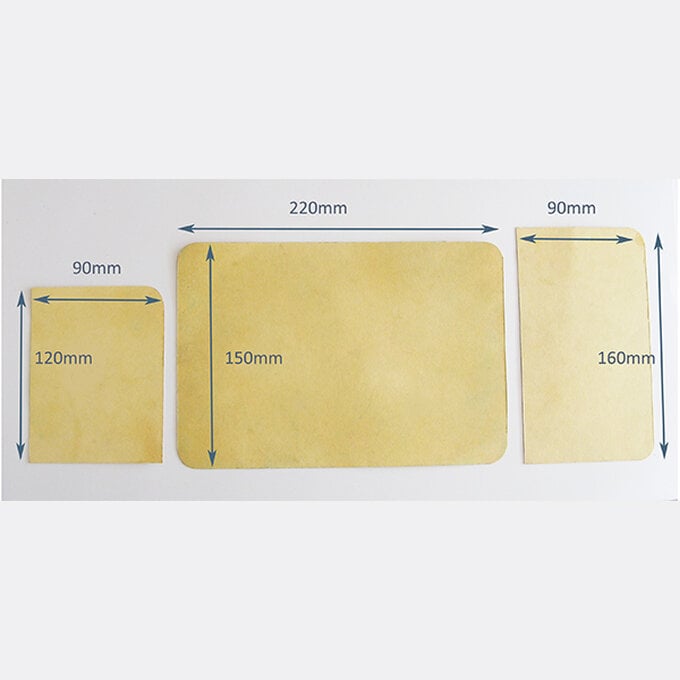
Press 2 blocks of FIMO Leather Effect between your thumbs and fingers to make rectangles approximately 6cm x 10cm. Stack the 2 rectangles together.
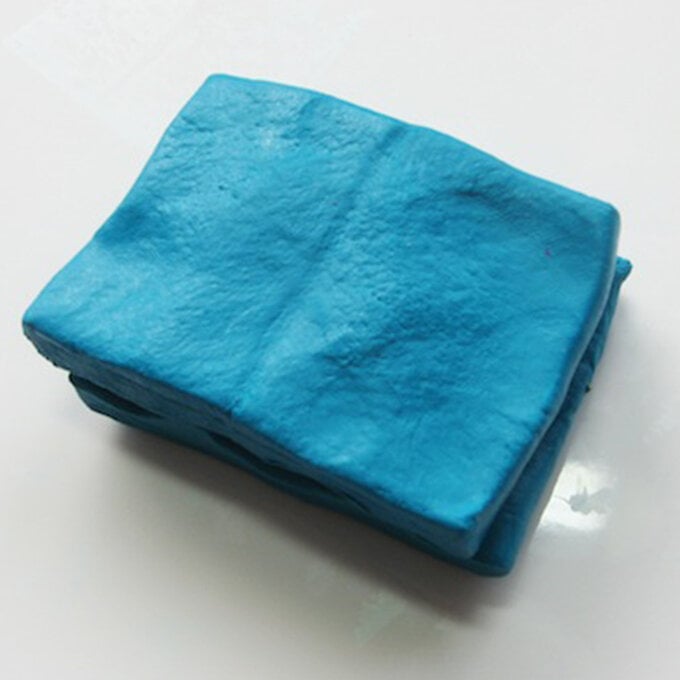
Flatten the FIMO with a rolling pin to make the rectangle bigger, approximately 10cm x 15 cm. The edges can be carefully pulled with your fingers to stretch the FIMO.
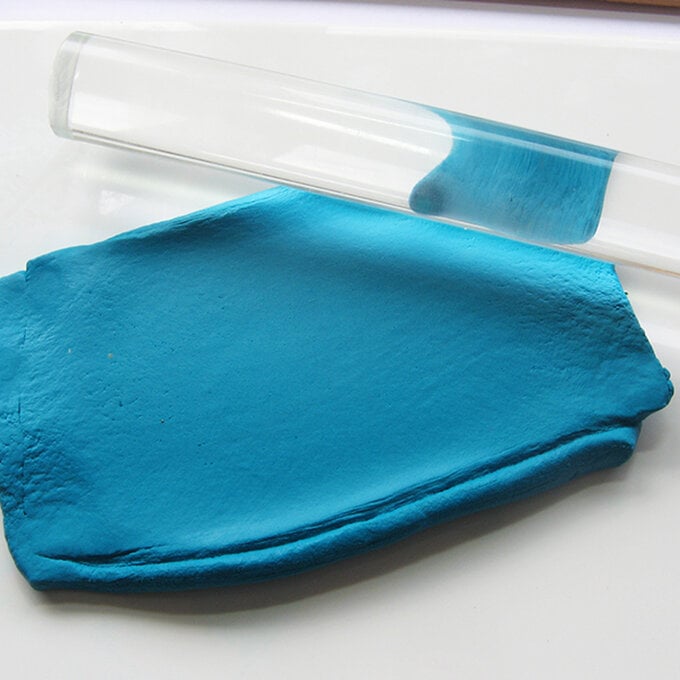
Roll the FIMO through the clay machine on setting 1 (or use the widest setting, on some machines this may be '0') OR use the rolling pin to carefully roll the FIMO to 3.6mm thickness.
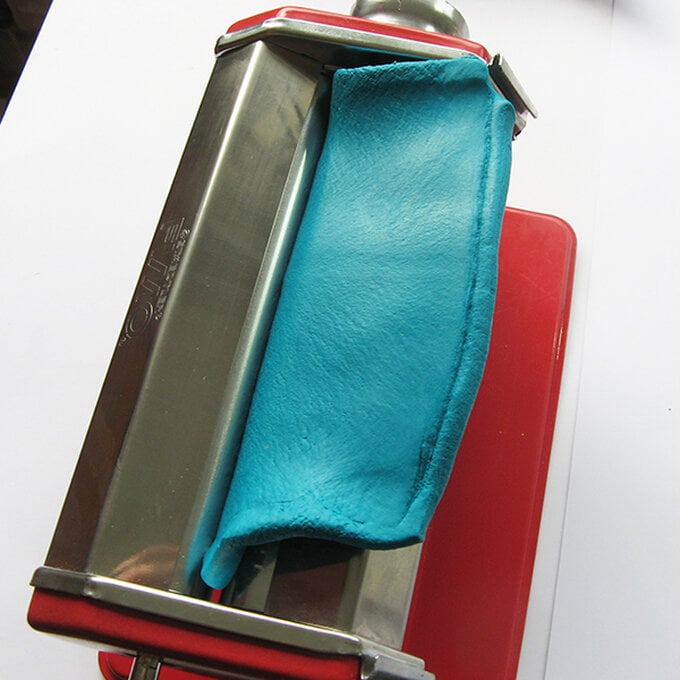
Fold over the rolled FIMO, in half, then in half again to make 4 layers.
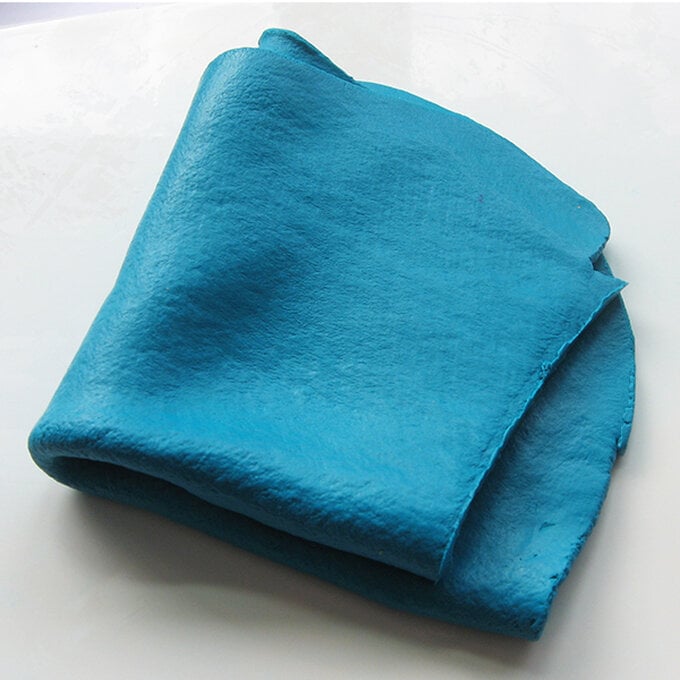
Flatten the FIMO again with a rolling pin into a 12cm x 15cm rectangle, then roll it through the clay machine on setting 1, then 2, then 3. Or roll out by hand to approx. 2.1mm. If necessary, trim the edges into straight lines each time the FIMO is rolled.
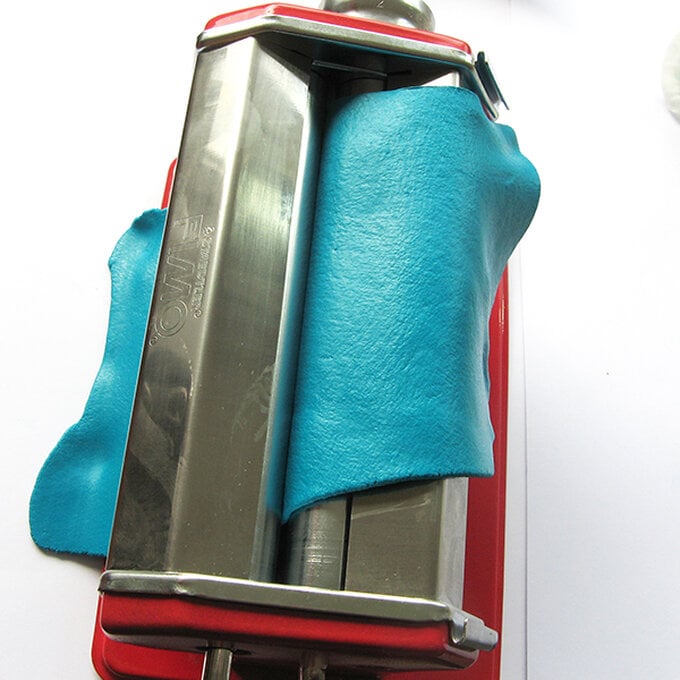
Carefully place the FIMO onto a large tile or baking tray and trim the uneven edges into straight lines.
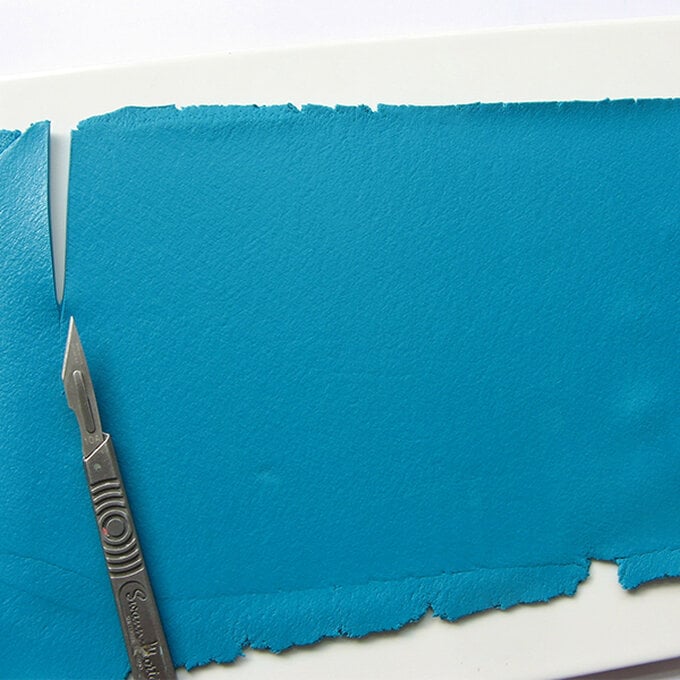
Check the rolled FIMO is roughly the same size as the template, or up to 5mm smaller on each side is OK. If it isn't big enough, carefully lift the rolled FIMO and stretch it into shape.
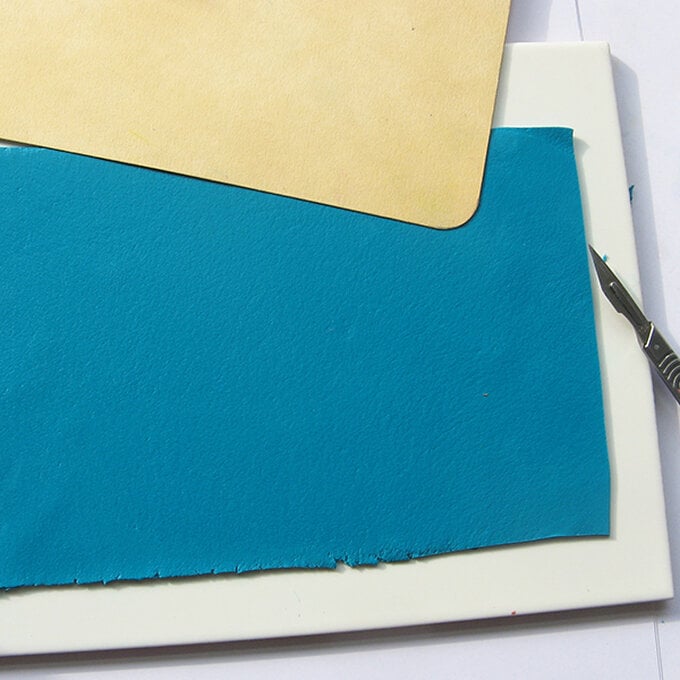
Repeat steps 1-7 using another FIMO Leather colour to make a matching rectangle. Place it onto a tile.
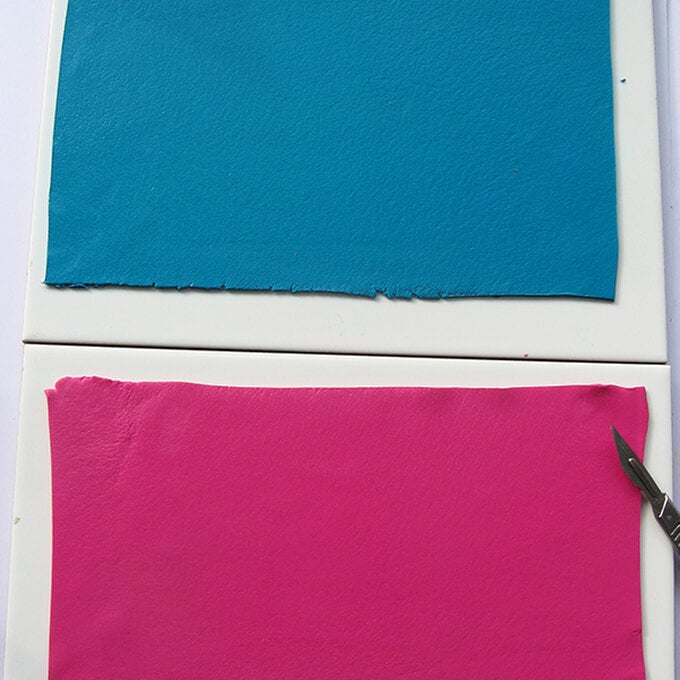
Lift up one of the FIMO rectangles and place it on top of the other colour. Gently press over the top with a rolling pin.
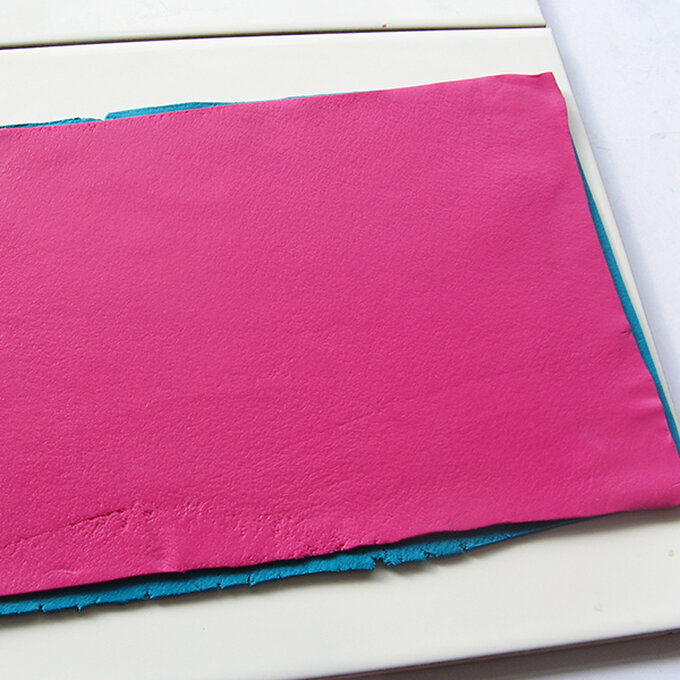
Roll the 2 colour layers through the clay machine on setting 1 to flatten them or roll out to approx 3.6mm with a rolling pin. Trim any uneven edges then roll it again on setting 2, then on 3 or approx 2.1mm with a rolling pin. Save the offcuts to make the pockets.
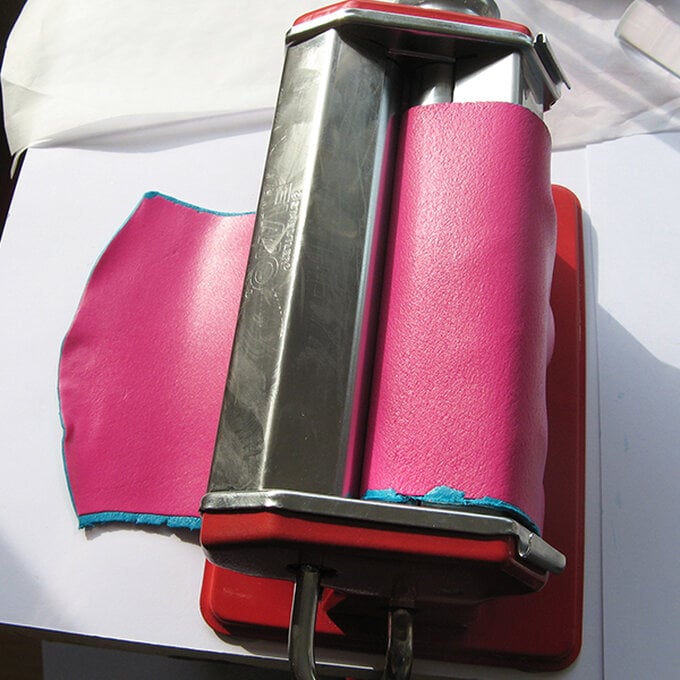
Place the rolled FIMO onto a sheet of baking parchment on a tile, with the colour for the outside facing upwards. Cut around the template to make an accurate shape with curved edges.
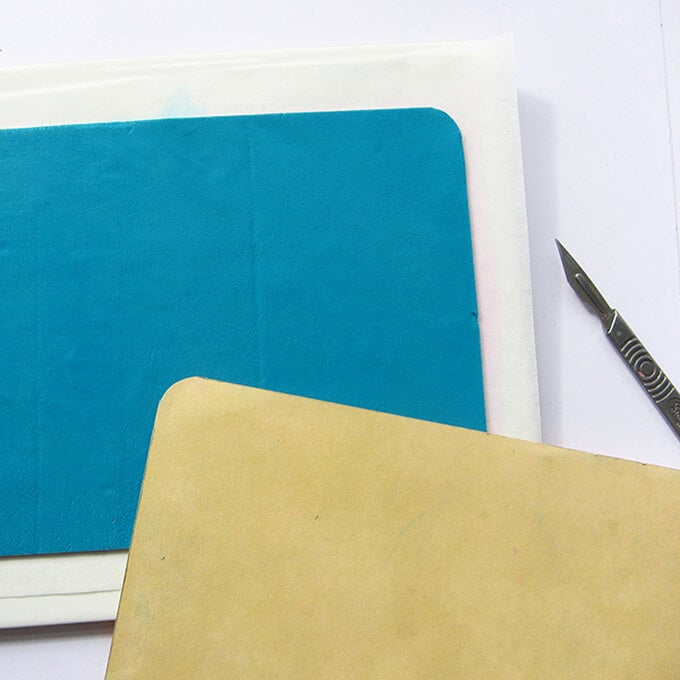
To add a surface pattern, press a Texture Sheet into the rolled FIMO. Check the size of the FIMO with the card template, trimming or pressing the edges if necessary.
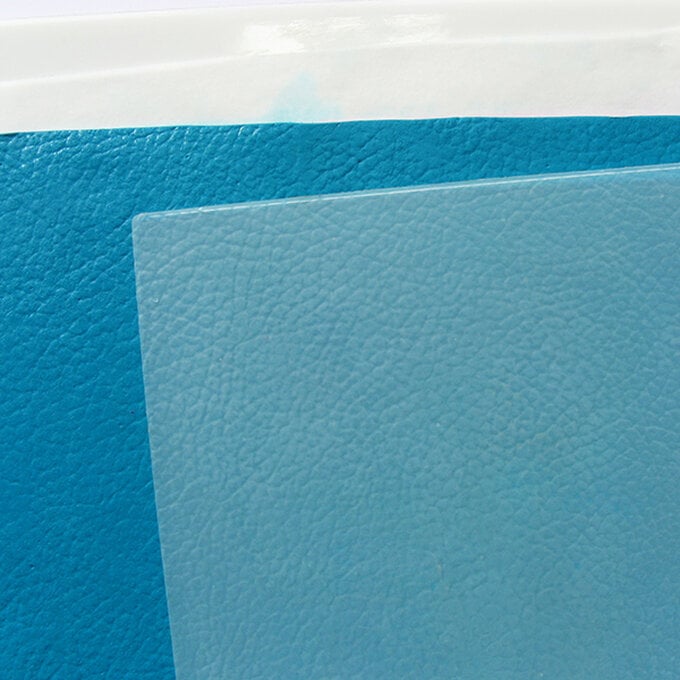
Press stamps into the surface of the FIMO to add a name, lettering or an image. To help position the stamps, draw around the card template onto a piece of paper with guidelines. To prevent the stamps sticking, they can be lightly coated in bicarbonate of soda before pressing into the FIMO surface.
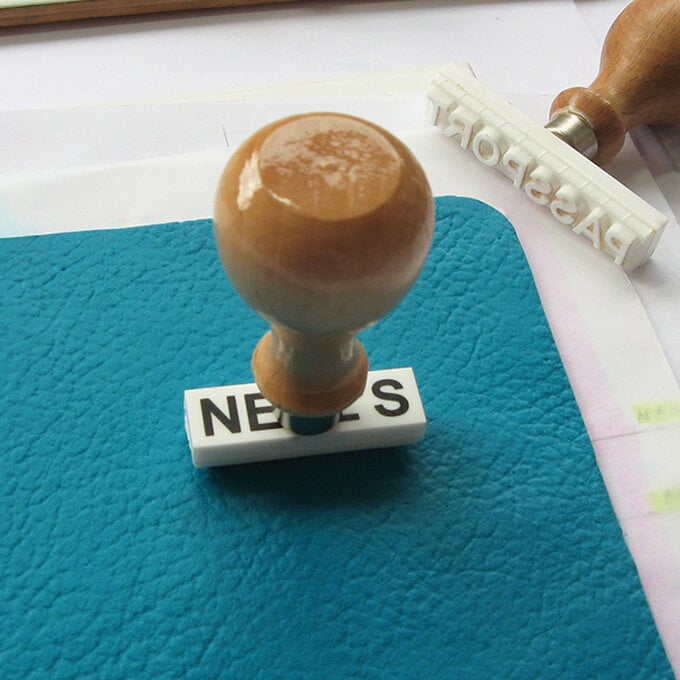
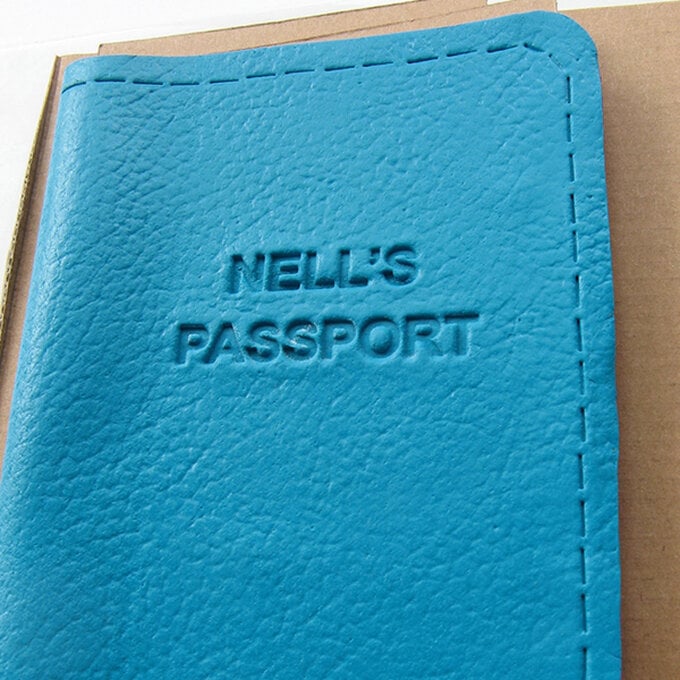
Use a small strip of card or plastic to press stitch marks around the edge of the FIMO.
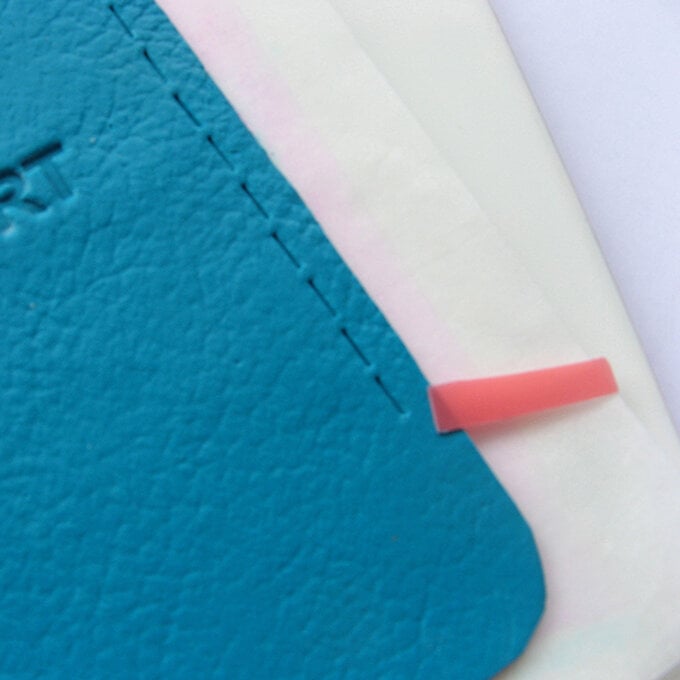
Use the baking parchment to carefully lift the FIMO onto a piece of thick card placed onto a tile or baking tray. Peel away the parchment, place a strip of card on one side inside the cover then fold it over. Add another strip of card to add more depth if you need to. Check the corners and edges line up, if you need to adjust them, do this by moving the card rather than touching the FIMO.
Gather up the left over FIMO pieces into a ball.
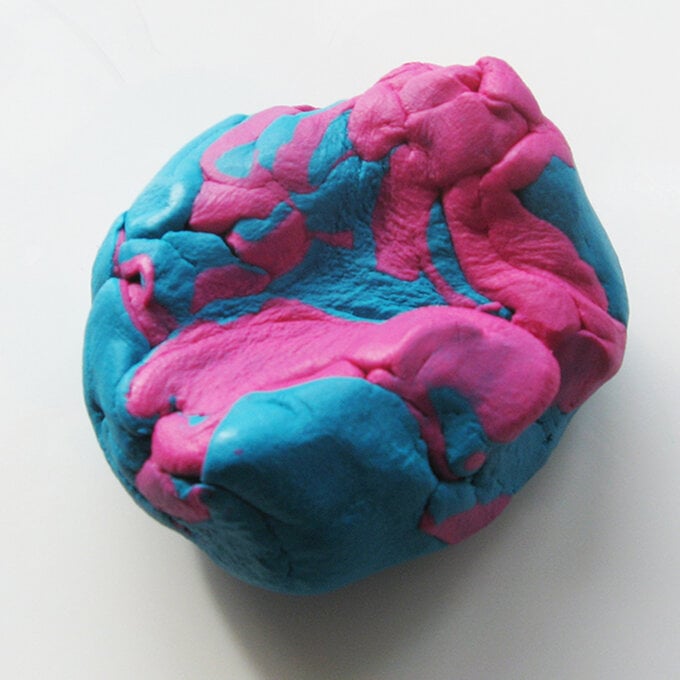
Flatten the FIMO with a rolling pin to make a marbled effect. The width needs to be about 12-14cm.
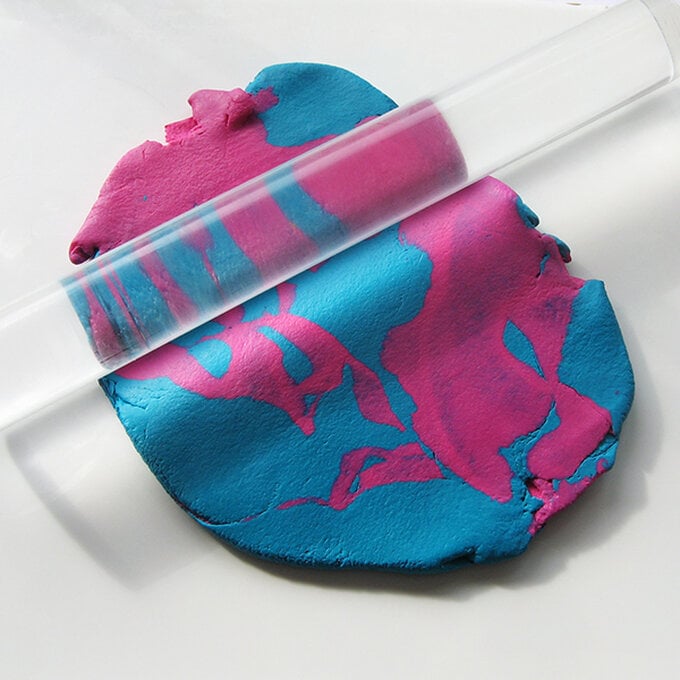
Roll the marbled FIMO through the clay machine, on settings 1, 2, 3, 4 and 5, to make a thin sheet, or roll out the clay with a rolling pin to a thickness of roughly 1.6mm.
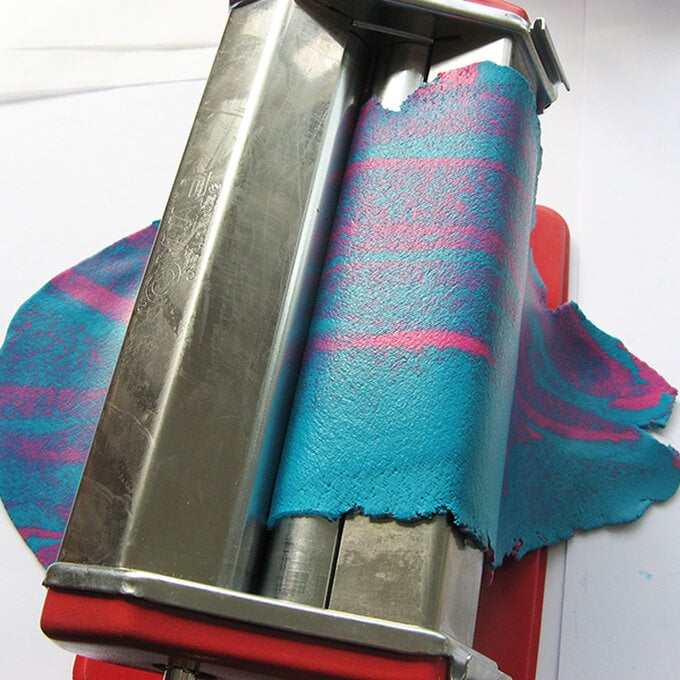
Place rolled the FIMO onto on a tile. If it's too big, trim the edges. Re-roll the clay through the machine again for a more granular pattern.
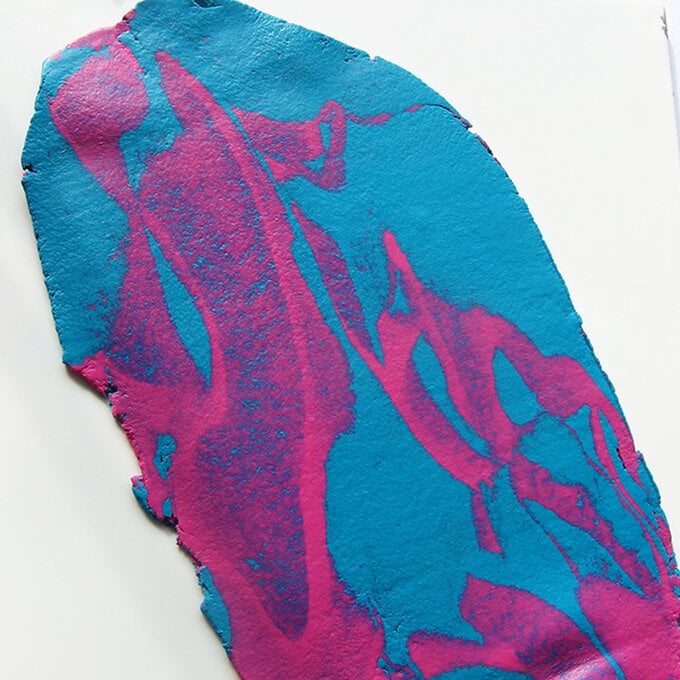
Cut the rolled FIMO into 2 rectangles. Each piece needs to be about 5mm-10mm bigger than the 2 card templates.
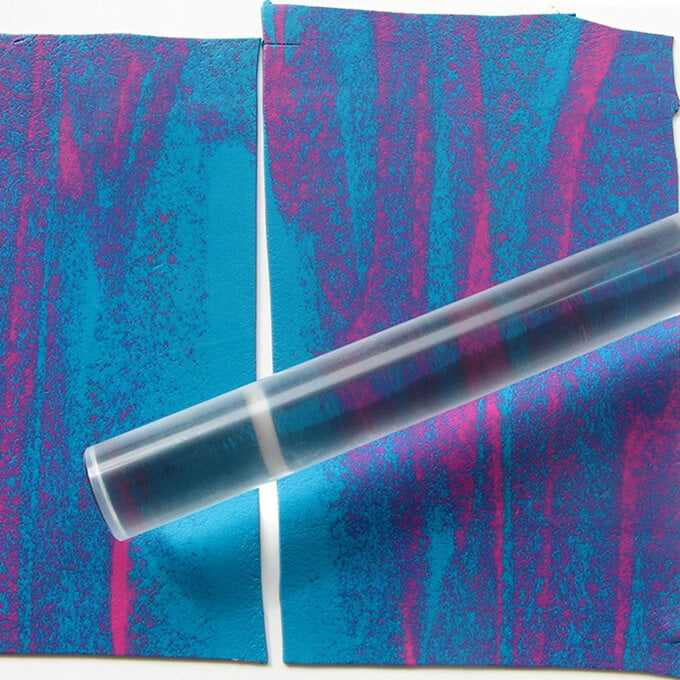
Bake FIMO following instructions on the packet. Allow FIMO to cool completely before handling.
Trim the pocket sections with a craft knife or sharp scissors using the card templates as a guide. Holding the passport partially open, squeeze superglue around one edge then press one of the pockets in position so the edges overhang on the outside. Repeat with the facing pocket. Press the edges to squeeze out any excess glue and leave to dry.
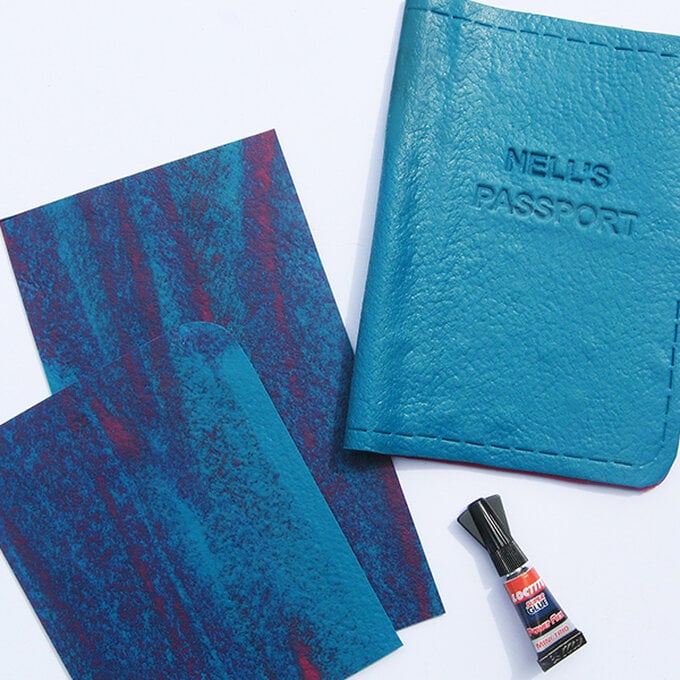
Carefully trim around the edges with a craft knife one side at a time with the passport opened out over the edge of a table with a cutting mat.
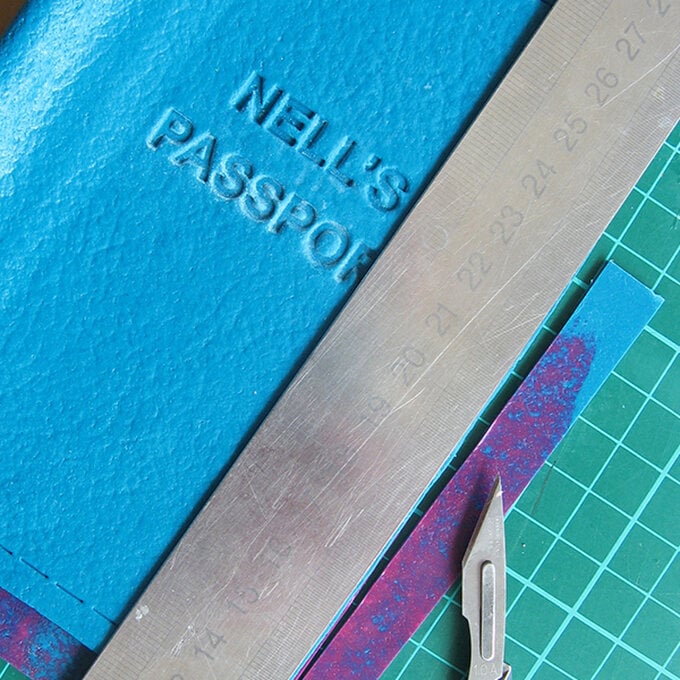
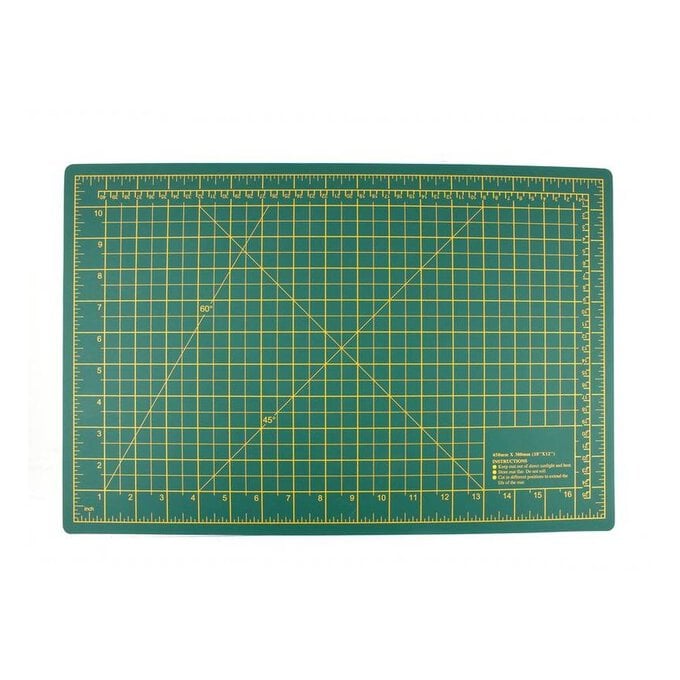




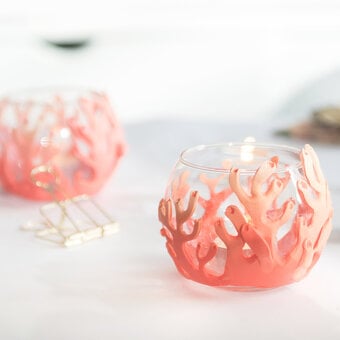
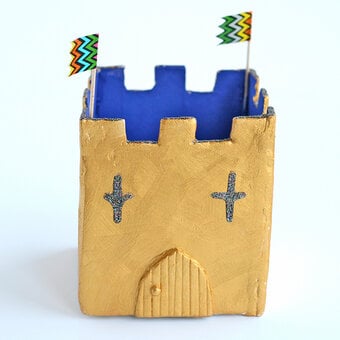
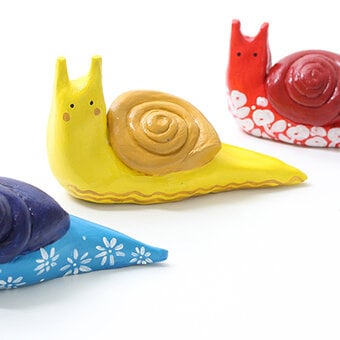
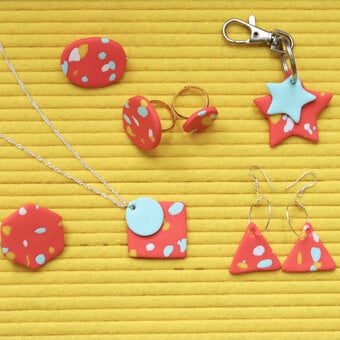
.jpg?sw=340&q=85)